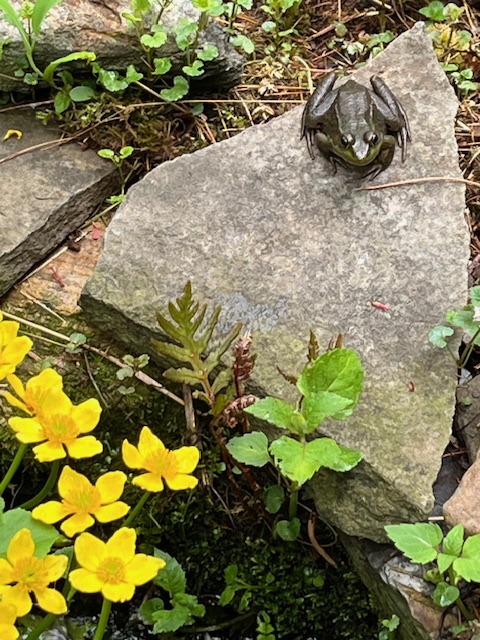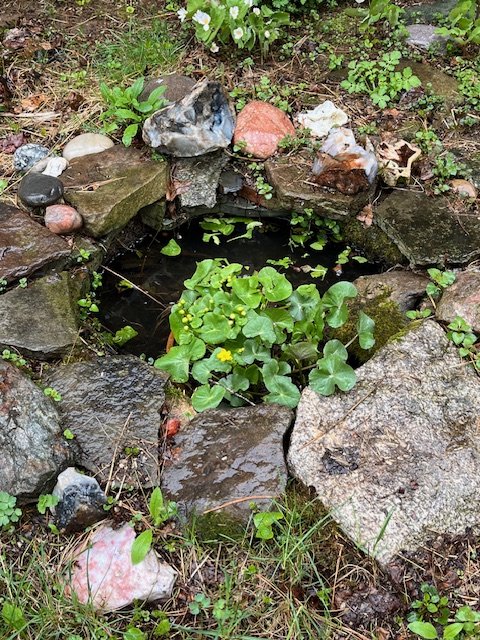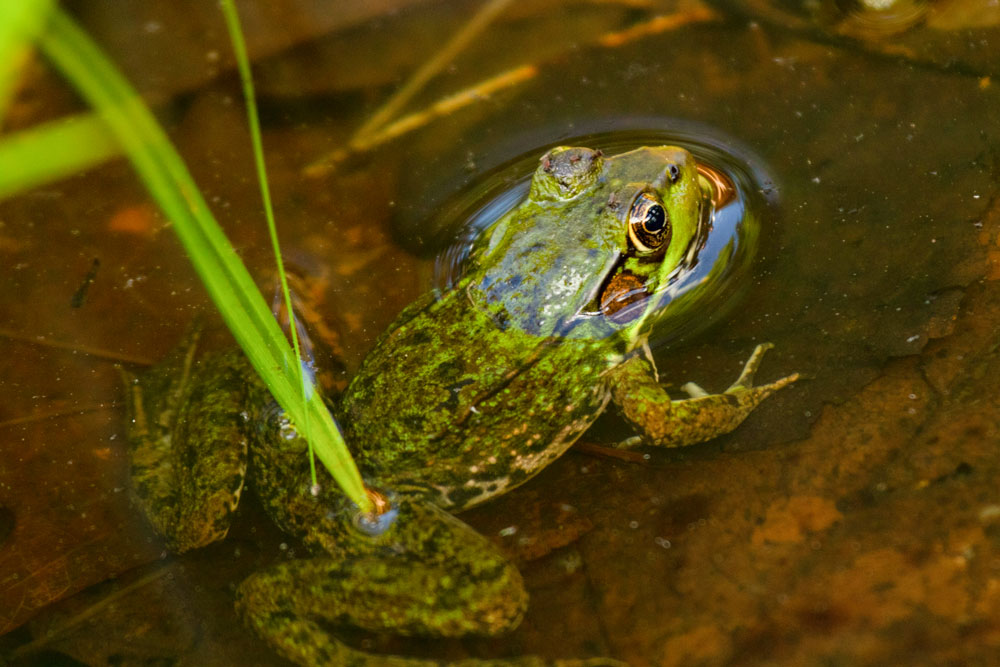
Jack or Jill?
Jack in the Pulpits are intriguing spring woodland herbs that are native to the eastern part of the United States. They can be found along moist and shaded forest seeps, sedges, streams, and floodplains first appearing as a single pale green spike as the plant breaks ground in early spring.

As the plants mature and begin to flower in April or May one or two long stems, each with three green leaves unfurl anywhere from three inches to two feet tall depending upon the Jack’s age and growing conditions. The root is a corm, it is shaped like a turnip.
The Jack is an erect spike covered with tiny green-to-purple flowers that is called a spadix. Then comes the pulpit or spathe. This delicate hood protects the reproductive organs. The single flower is either a pale green stiped with cream or a brighter lime green with purple stripes. Each flower looks like a delicate green vase. During the summer months, if the Jack is a Jill; seeds that are growing stay green like most fruits. When they ripen in August/September, the berries turn a brilliant scarlet. Sending a signal that Jill’s fruits are ready to eat, bears, turkeys, birds and many other animals feast on the berries digesting the soft parts of the fruit and excreting the seed—usually far from the parent plant, often in a new suitable habitat.

Each jack is either male or female. You can tell the sex of the plant by gently pulling the sides of the pulpit apart and looking around the base of the jack. There are either tiny, green seeds (in the female) or cream-colored stamens with pollen (male).

Here’s the intriguing part: If you come back to the same plant the following spring you might discover that Jill has become Jack because individual plants can change their sex from year to year. Jill becomes Jack if growing conditions are poor because the sex of the Jack in the pulpit is determined environmentally, not genetically. If a plant has a good year and stores a significant amount of food in the corm, the following season the jack will bloom as a female. If the plant is not able to store enough energy or has some kind of shock, the next season Jill will bloom as a Jack!
Female Jack in the pulpits are bigger and more robust than males because they have to support the growing and ripening seeds. The males produce the pollen dust, a drastically smaller expenditure of energy.
Once a Jack in the pulpit has become established others will follow, and soon there will be a family of these plants. The young ones are often single three lobed leaves that surround the older Jacks.

Jacks are pollinated by fungus gnats, which find their way under the overlapping pulpit and down the flowers’ large opening to the pollen and ovules at the base. Each flower has a slightly fungal scent that attracts the gnats. These gnats aren’t strong flyers and the task of flying up and out the top of the pulpit is difficult for them, so the male plant assists them by providing them with an escape hatch – a tiny opening.
To find the gnats’ exit, look for a hole less than 1/16th of an inch at the base of the pulpit, where two layers of tissue overlap. If the plant blooms as a male, the gnats escape and carry pollen to the next flower. In female flowers the opening is absent since the plant has no need for the gnat to move on. Insect demise follows.
During the summer when they are maturing, Jill’s seeds stay green like most fruits. When they ripen in August or September, the fruits turn a brilliant scarlet. When Jill’s fruits are ripe they attract birds, bears, turkeys, and many other animals. After an animal eats the fruit, it digests the soft parts and excretes the seed—usually far from the parent plant, often in a new suitable habitat.
Due to habitat loss and over-harvesting, Jack in the pulpits are considered threatened or endangered, so please refrain from picking/ or removing them. If growing conditions are favorable these plants can live for 25 years.
Ever since I moved here 40 years ago, I have had an abundance of Jack in the pulpits down by the brook. Then I began my study of black bears. After a few years I noted that I had less jacks and by then I knew that the corms were an early spring delicacy. By the time my study ended sixteen years later, all my Jack in the pulpits were gone!
Patiently I waited for years for a bird or creature to leave me a seed while combing my forest every spring without success.
Finally, I couldn’t stand the absence of jacks for one more year, and I wasn’t about to dig a corm in another forest because these plants are becoming scarce in many places. To remedy my loss this April I bought one at Mclaughlin Gardens to begin again.
As fate would have it, I then found one plant growing in the sedges by the brook that turned out to be a female (I just checked) with smaller jacks breaking ground a couple of weeks later. When I discovered more here and in other forests, I decided the plant goddess/god must have heard my lament!
Just this morning while taking a break from this writing I trudged through my rain-soaked woods. Imagine my surprise when I came upon another huge clump with the female unveiling her cluster of bright green berries!

The life cycle of the Jack-in-the-pulpit is magnificently complex, relying on other species for pollination, seed dissemination and, ultimately, survival. This plant conjures up the trickster with its deceptive scent and Jack and Jill turnabouts!
The next time you see one or a cluster of these gems, marvel at the way nature demonstrates the reality and necessity of developing intimate and multifaceted relationships with other species including a healthy mycelial network to survive and thrive!



























